Face-Off
What do you dress for? Seriously, think about it. Remove the preconditioned notion that it’s socially unacceptable to walk around sans clothes. There are a number of reasons, some functional and some frivolous: protection, attraction, deflection, association, decoration, tradition, I could go on. The consensus on our last blog post is that good design solves a problem. Adam Harvey, a fellow Brooklynite, technologist, designer and friend of ours is in the biz of solving modern problems caused by technology with technology. He is currently tackling the problem of personal privacy. Adam’s the man behind the Anti-Paparazzi Clutch that Sheena flashed at Ars Electronica back in September. Since then, he’s been busy with his latest project on how to artfully dodge surveillance cameras, in style.
He calls it CV Dazzle, an assortment of makeup and hairstyles that camouflage your face from computer vision (CV). Camouflage in fashion was originally purely functional dress for protection that turned into a trend. You’re probably thinking, “camo is so ’98,” but there are many patterns beyond jungle green and desert storm. Like Dazzle, which looks as snazzy as it sounds. Dazzle was a camouflage paint scheme used on ships during World War I. At first glance Dazzle seems like the anti camouflage, because it stands out rather than blends in. But its purpose is confusion rather than concealment. It makes it hard for an observer to distinguish the stern from the bow of a ship and whether it’s moving towards or away from them. (Same logic applies to zebra print.) Dazzle camo is also not specific to environmental lighting conditions, ie. it works rain, shine or online. (via wikipedia)
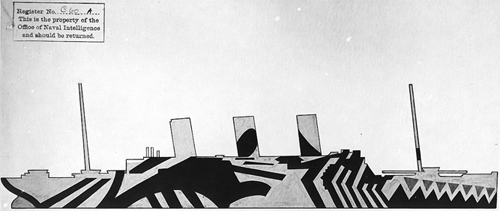
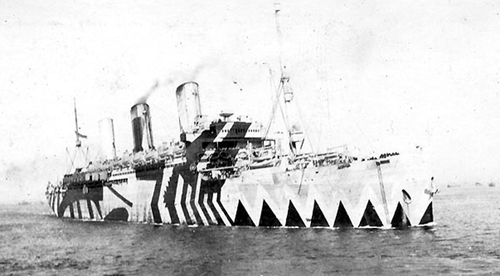
USS Leviathan’s starboard side “dazzle” camouflage pattern (U.S. Naval Historical Center Photograph)
Adam applied the principles of Dazzle to face concealment. First, he figured out what features make a “face” recognizable to a computer; its contours and shadows. Then he inverted the light areas with the dark to essentially create an anti-face. It looks like an extreme glam rock makeover, but actually it’s the opposite. Regular makeup enhances your facial features, making your face easier to recognize. CV Dazzle breaks up the gestalt. People can still see a “face,” but computers can’t. He’s now working on a SPF-CV scale from 0-50 (yes, like sunscreen) that takes lighting conditions and face angles into account and works for online applications, so you don’t have to worry about your computer stalking you at night.
Adam not only advocates privacy, he’s also for purposeful style; to deflect the wrong kind of attention and attract the right kind. His work proves that fashion and function aren’t mutually exclusive. In his own words “It doesn’t work if people don’t want to wear it.” So, next time you reach for your compact, decide if you want to put your face on, or take it off.
x. wasabipear
‘Take a bite.’
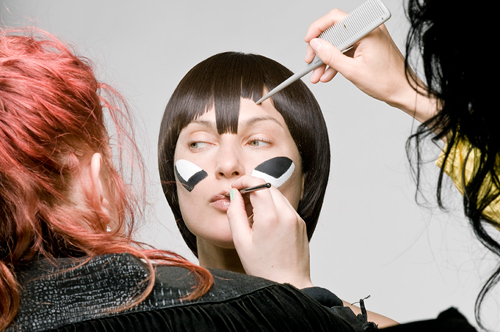
Model: Jen Jaffe, Photographer: Adam Harvey, Makeup: Leigh Brown, Hair: Pia Vivas
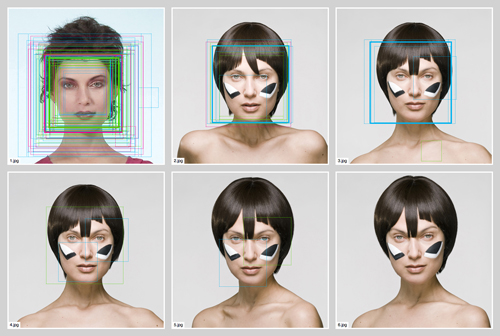
The dotted lines represent everything the computer things might be a face. The solid lines indicate a positive face detection. Each of the four colors—cyan, magenta, yellow, and green—represent each of the four face profiles. Images without any solid lines have beaten the face detector.
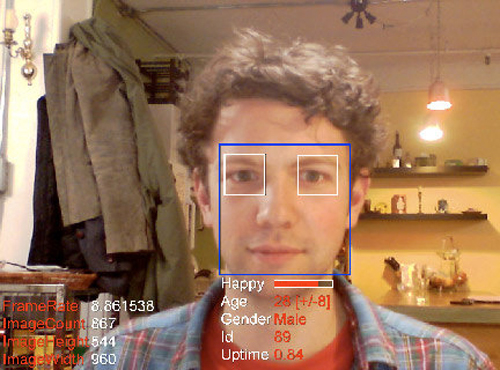
Adam Harvey’s face recognized. Image from SHORE (you can download a demo and DIY).
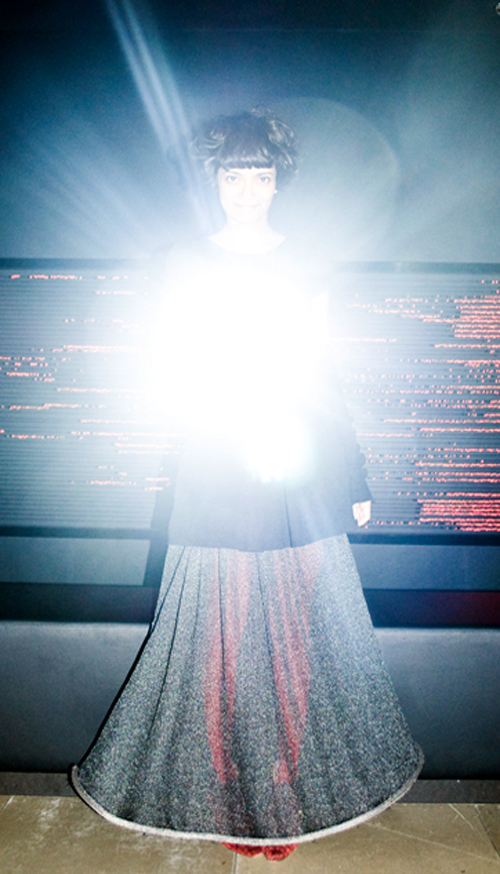
Sheena flashing the ‘Anti-Paparazzi Purse’ presented at the Wearables Symposium at ARS Electronica 2009.
See more of Adam’s work at AH Projects >
Comments